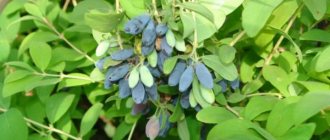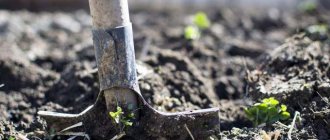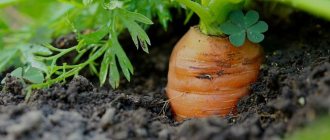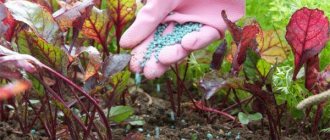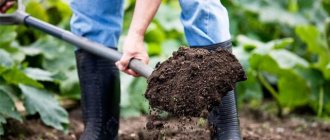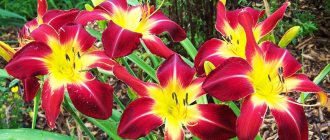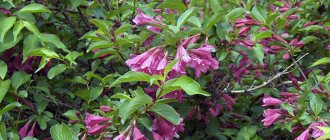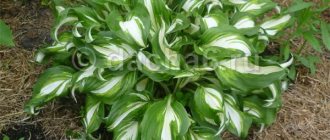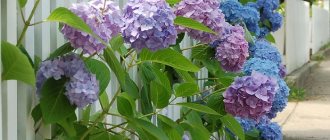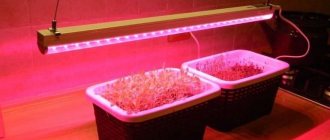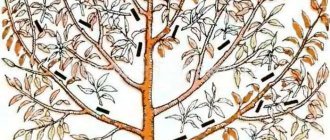18633
Feeding honeysuckle in spring, summer and autumn is carried out in accordance with the garden work schedule. Fertilizers are selected taking into account the season and condition of the bush. In order not to harm the plant and avoid its death, it is recommended to familiarize yourself with the classification of drugs suitable for this crop.
Harvest honeysuckle
general information
The bushes are planted in a lighted place. In shade and partial shade they will not produce a good harvest. It is advisable to choose one-year-old and two-year-old seedlings, since others are unlikely to take root. The plant can be propagated by cuttings or layering.
Honeysuckle does not require special care, it is enough to water it abundantly and therefore it is suitable for beginners. Due to its good tolerance to frost, it can be found throughout Russia.
In order to understand how to properly care for a plant, you need to take into account its physiological characteristics:
- self-sterile and cross-pollinated crop, so five bushes are required;
- grows slowly;
- berries appear on new branches;
- The root system is superficial and therefore requires careful handling.
Feeding honeysuckle in the fall is an important stage in care. It allows you to stimulate the growth of new shoots, improve the quality of berries (size, taste, quantity) and prevent fruit shedding.
How to trim a bush
Honeysuckle bushes are prone to thickening of the crown. This is explained by the peculiarities of the growing season of the above-ground part of the plant. The buds of the tops grow for about three years, then they die, while the side shoots begin to actively grow. The bush matures, the bottom of the bush becomes bare, shoots of the second and third circles begin to form en masse; if they are not cut off, they intertwine, forming a thick, dense ball.
You may be interested in: Treating the garden with iron sulfate in the fall, the pros and cons of fertilizer
You need to know the subtleties of pruning:
- Sanitary pruning of shrubs is necessary in the first six years. In autumn or early spring, cut out dried, broken or frozen branches. The main task is strong shoots from the base of the bush to begin to form a crown.
- After six years, sanitary treatment is combined with thinning. It is best to carry out manipulations after leaf fall. If you have to postpone pruning to spring, you need to do it very quickly, since honeysuckle wakes up early.
- After several years of fruiting, thinning pruning is needed. It must be carried out every three years. A third of the skeletal branches are not cut, and some are shortened to form side shoots. Old shoots (over eight years old) are cut out at the base; if young shoots are needed, a seven-centimeter stump is left, and new shoots will grow there next year.
- Young growth should be at least 20 cm. Only under these conditions can the bush bear a rich harvest. The plant needs to have enough light and nutrition. To ensure these conditions, you need to remove the branches growing inside the bush and shading the crown.
- Experienced gardeners recommend leaving no more than fifteen skeletal branches of different ages and removing the rest. This will affect the quality of the berries and the increase in yield.
How is anti-aging pruning performed?
Honeysuckle also needs rejuvenating pruning when the lower part is already very bare and the crown has become higher along the trunk. In this case, the overall productivity decreases, the berries remain only on the periphery. When pruning, you need to remember that honeysuckle does not have root growth. It also does not grow zero shoots, and replacement branches grow from lonely buds at the bottom of the old shoots. Therefore, you should not prune at the root. It is necessary to leave stumps about 50 cm high. Pruning is carried out only in late autumn, when the leaves have already fallen. Then in the spring young shoots will grow, and a year later the bush will begin to bear fruit.
You may be interested in: What to feed strawberries in the fall: minerals or organics?
After the harvest
All berry bushes are depleted after fruiting . Therefore, it is important to properly care for them during this period.
Fertilizers for honeysuckle are applied in spring, summer and autumn.
This sequence is dictated by the fact that green mass is collected and buds are laid, then the plant is supported by a complex of nutrients and then preparations for wintering begin.
To select the correct type of fertilizer, take into account the soil on which honeysuckle grows.
- When sand predominates, substances are added frequently and in small portions.
- On clay soils, a one-time application is allowed.
Watering
With edible honeysuckle, already in the middle of summer you can see that the growth of shoots has stopped, and with a lack of moisture in the air and soil, by September the leaves dry out and fall off. Therefore, preparing the bush for winter should begin in mid-summer . In hot and dry weather, honeysuckle is watered once a week, and the soil under the bush is mulched. The roots of honeysuckle are shallow, so severe drying out of the top layer of soil will lead to premature departure of the shrub for winter dormancy. In wet weather and cool summers, additional watering is not required.
Fertilizers for autumn
The basis of fertilizing is nitrogen, phosphorus and potassium.
In September, substances are added to safely survive winter frosts.
Despite the fact that the shrub tolerates low temperatures well, it is better to play it safe and prepare it. The root system of the plant is located near the surface and in times of little snow it can be damaged.
Can be used:
- potassium sulfate or potassium salt,
- superphosphate, organic matter,
- wood ash,
- and compost.
Carrying out honeysuckle care work
It is not enough to just feed honeysuckle; it requires mulching and loosening the soil in the spring, summer watering, and the use of special preparations for pests.
In the spring, at the moment of bud break, thinning pruning begins immediately, if it was not done in the fall. When the soil thaws, nitrogen fertilizers are applied to the root area so that they penetrate to the roots along with the melt water. To eliminate the risk of damage to the shrub by ticks, aphids and other pests, it is recommended to treat with insecticides. This must be done when the average daily temperature has reached 5 degrees and the buds have swollen.
During the ovary period it is necessary to carry out weeding and mulching. This event is especially important if the summer is dry. A layer of mulch will prevent the plant's root system from drying out. Fertilizers are applied in liquid form by watering the plant.
During a dry spring, you need to water the berry garden, at least 50 liters per square meter. If you do not provide the plant with a sufficient amount of moisture, the berries will be less juicy, smaller, and the yield will noticeably decrease.
In the summer after harvest, the plant needs regular watering. To protect against leaf-eating insects and scale insects, plants are sprayed with insecticides, and acaricides are used to combat mites. At this time, additional phosphorus-potassium feeding of honeysuckle is necessary.
You can start propagating honeysuckle by green cuttings as early as mid-June. Over the summer, the seedling will form a root system and will be ready for wintering. A plant grown from cuttings blooms in the third year.
Events held in the fall lay the foundation for the future harvest. Fertilizers are applied in the fall if they were not applied in the summer. The tree trunk circle is sprinkled with peat, humus, and compost. These fertilizers will serve as both feeding and heating for the roots. When using peat, you can correct the acidity of the soil with wood ash.
Organic fertilizers
Horse manure, cows, chicken droppings - all this creates nutritious soil. It is important to properly prepare the material before use.
Manure solution
- It is advisable to make a special solution (10 parts water and 1 part manure)
- and leave it for several days. This procedure will reduce the aggressiveness of the environment.
One healthy bush needs 10 kg of organic fertilizer. It is applied to a depth of 10 cm.
This must be done every two years in the fall after harvesting, but before frost sets in.
In late autumn after frosts, a slightly different combination is used:
- 100 g horse manure or chicken manure.
The frozen soil preserves the mixture and at the first thaw it will begin to penetrate to the roots.
We introduce organic matter
A solution of microelements will not hurt, which can be used to feed honeysuckle after harvesting. After all, berries contain a large amount of minerals and all of them are taken from the soil. Approximately once a season it is necessary to restore the balance in the soil.
To maintain the nutritional characteristics of honeysuckle berries, fertilizing after harvest can be done with an ash solution. It contains almost the entire table of minerals. You can boil potato peelings and add ash to the broth, leave for a couple of days and pour into the recess around the bush. Superphosphate is poured there and sprinkled with a layer of soil.
Why is autumn fertilization recommended? Because in spring this plant begins to bloom early, therefore, it requires nutrition to build up green mass and resist frost.
It is known that the vegetative buds of the berry tree can withstand frosts down to -8 degrees in the spring. Potassium and phosphorus are needed for flowering and protection from frost. In a word - the entire nutritional complex.
Full tillage of the soil under honeysuckle in the fall will speed up spring flowering, and ripe berries will appear faster. The main thing is that the taste will be sweet, because the potassium added in the fall will work. After all, it is what affects the accumulation of sugar.
Immediately after picking the berries, honeysuckle can be fed with complex mineral fertilizer. This will not harm the bush, since the berries are collected in early June. Autumn is still far away and the bush can grow and become woody. Closer to autumn, nitrogen nutrition is not applied. In August, honeysuckle is fed only with potassium-phosphorus mixtures.
Preparing for winter
Honeysuckle is an easy-to-care and frost-resistant crop; it is easy to grow in any region. However, to increase resistance to pests and diseases, as well as to harvest a generous harvest, garden crops need proper care. Autumn care consists of the following activities:
- pruning;
- planting or transplanting;
- feeding;
- shelter (decorative species are needed).
Pruning is carried out to remove old and damaged branches. Also, with the help of such actions you can form a beautiful and neat shrub. It is necessary to leave 7-8 healthy pagons, removing all unnecessary stems - crooked ones and stems growing inside the bush. Pruning is carried out immediately after the leaves fall. Before the age of 5, there is no need to prune honeysuckle.
It is advisable to plant in the fall, since honeysuckle awakens in the spring earlier than other plants. If you plant or replant a bush after the snow melts, it is unlikely that it will have time to bloom and bear fruit this year.
To plant crops, small depressions are made on the land plot. At the bottom of each hole you need to pour a bucket of humus, 200 g of superphosphate and 20 g of potassium salt. These components are mixed with part of the soil dug out of the hole. The plants are deepened so that the root collar of the honeysuckle is at ground level, the top layer of soil is pressed down with your hands and watered.
After harvesting, the crop is fertilized with nutrients to increase the plant's immunity. Such care makes it easier to survive frosts and makes honeysuckle less vulnerable to attack by pests and the development of diseases. In autumn, fertilizers are applied after all the leaves have fallen from the bushes.
The root system of shrubs is located close to the soil surface, so it is not recommended to loosen the soil too much. Given the superficial location of the roots, the crop needs constant feeding, since it receives practically no nutrients from the soil.
Usually there is no need to cover honeysuckle for the winter; the crop can withstand frosts down to -40 C, with the only exception being decorative species. The only thing that may be needed is to protect the bushes from strong winds and snowfalls. To do this, they are tied and bent to the ground. Decorative varieties must be protected with covering material.
Gardeners to gardeners
Honeysuckle is the earliest crop in the orchard. Its berries have truly unique healing properties and are able to completely restore the body of people living in the northern regions of our country after a long autumn and winter.
You can read about the history of the creation of cultivated varieties of honeysuckle, the medicinal properties of this most valuable crop and its agricultural technology in our already published article:
"How to grow honeysuckle."
But there are certain features when caring for honeysuckle, without knowledge of which it is impossible to regularly obtain high yields of its delicate, sweet with a slight bitterness, berries.
Today we will tell you about how to properly care for honeysuckle, and also present you with the best domestic and foreign varieties from our unique collection of this wonderful berry crop.
IMPORTANT FEATURES OF CARE OF HONESLUKE
Proper care of honeysuckle begins with its planting.
Features of planting honeysuckle . Honeysuckle loves the bright spring sun. And this is understandable, because its flowering begins at the end of April - beginning of May (depending on the variety), and then early fruiting begins.
To produce a large harvest, bushes require a lot of light and heat. However, many gardeners make a big mistake by planting young bushes in direct sunlight.
Remember how delicate and thin the leaves of this plant are. On hot days, the hot rays of the sun can literally burn out all the moisture from them, turning them into parchment, which can no longer be restored.
Therefore, find a place on your site for honeysuckle seedlings in diffused sunlight, so that during hot midday hours (from 12 to 15 o’clock the bushes are shaded).
The rest of the daylight hours they should be in the open sun. Then the flowering will be friendly, the harvests will be good, and the berries will be sweet.
A huge advantage of honeysuckle is its unpretentiousness with regard to soil acidity. It will grow well in neutral and even medium acidic soils (pH 5 – 7).
But when preparing the soil for planting, remember that honeysuckle does not tolerate heavy, cold, clayey soils, which interfere with the access of oxygen to the roots. And without this, honeysuckle will grow poorly.
Light, loose, organic-rich soils are suitable for it. To do this, when preparing a site for growing honeysuckle, for each square meter add two buckets of compost, two buckets of sand, two buckets of leaf soil, a bucket of wood ash and potassium-phosphorus additives for digging.
Do not plant honeysuckle in flooded lowlands or in areas with close groundwater. In such areas, plants will most likely die within 2 to 3 years.
Now about the planting dates. Since honeysuckle begins to vegetate early, it should be planted as early as possible - before flowering begins.
However, this rule does not apply to seedlings with a closed root system. And we have prepared exactly these – in durable pots – for you. You simply transfer them into planting holes and cover them with fertile soil on top.
You can safely plant our seedlings at any time, but it is still advisable before the end of June so that they have time to take root well and take root. Planted in the spring, they will give you some of the first berries the next year.
When planting, bury the root collar of a young plant 5–7 cm into the ground so that the plant quickly begins to form new shoots, which will contribute to the rapid growth of the bush.
The growing season of honeysuckle ends by mid-July - after the harvest has been fully harvested. Then stop all fertilizing and reduce the frequency of watering. The plants are already beginning to quietly prepare for winter.
Features of watering . Watering is of paramount importance for honeysuckle. If there is a lack of moisture, the plants will begin to get sick and may even die.
In the first summer after planting, young honeysuckle bushes should be watered daily. The plant is not afraid of cold water, so you can water it directly from a hose connected to a water supply or a submersible well pump.
You need to water first at the root, and then under the bushes - over the entire planting area in order to thoroughly wet the soil around the honeysuckle bushes to a depth of 50 cm, since the root system of the plant is quite impressive.
Watering time is no earlier than 19:00, when the sun has already dropped quite low. We do not recommend watering earlier so that small droplets of water falling on the delicate leaves do not cause burns on them.
After watering, the ground under the bushes must be loosened and mulched with sawdust or straw in a layer of at least 5 cm. The mulch layer will prevent the evaporation of moisture from the soil and will also prevent the growth of weeds.
In addition to watering at the root, honeysuckle bushes require finely dispersed sprinkling over the leaves of the entire bush through special nozzles. Treat the entire bush with water “dust” for 10 – 15 minutes (depending on its size).
Spend it early in the morning (at 7 o’clock), when the sun cannot yet burn the tender leaves. Such a shower is necessary for honeysuckle on hot days so that its delicate leaves do not dry out. In particularly hot weather, this procedure is done every day.
In rainy, cold and cloudy weather, do not sprinkle. If it's cold but sunny, limit yourself to weekly treatment.
Features of fertilizing . For more information about what fertilizers, in what doses and how to apply, read our article:
"How to grow honeysuckle."
It is important to remember that this crop should never be overfed. If you filled the planting holes well when planting, then in the next two years there is no need to apply fertilizer at all. This is especially true for nitrogen fertilizing.
Otherwise, the bushes will begin to intensively grow green mass to the detriment of the formation of berries. Overfed bushes begin to bear fruit later and produce scanty yields.
Features of the formation . When caring for young honeysuckle bushes (up to 4 years), limit yourself to only spring sanitary pruning, removing all frozen, dried, old, crisscrossing and growing branches inside the bush.
Continue pruning annually thereafter. Honeysuckle bears fruit on one-year-old shoots, so in early spring, remove all old branches, leaving 5-6 of last year's strongest shoots and up to 7 powerful current shoots. And so every year, replacing old shoots with new ones, you are guaranteed to get good harvests of tasty and very healthy berries.
Every 12 to 15 years, the bushes need to be completely rejuvenated by shortening all shoots to 45 cm in early spring.
Features of preparation for winter . Honeysuckle has very high frost resistance, so it does not need to be protected from the cold. We only recommend covering the tree trunk circles with a 20 cm layer of fallen leaves in case of a snowless winter.
In early November, collect the branches and tie them lightly with a clothesline or bandage (so as not to damage the delicate wood). This will save the branches of the bushes from breakage as a result of freezing rains and heavy snowfalls.
THE BEST VARIETIES OF HONEYSUCKLE FROM OUR COLLECTION
Now that you know exactly how to properly care for honeysuckle, we suggest you choose the best varieties of this crop.
First of all, we present to you a new variety of Canadian selection, “Aurora”. Its berries, the size of a ring finger, are surprisingly tasty - sweet, aromatic, with a slightly noticeable bitterness, thin-skinned and very tender. Productivity can reach 8 kg per bush.
This stunning variety will grow and bear fruit well in the northernmost regions of Russia. Since its frost resistance reaches –48 degrees!!!
And now we present the leaders of our collection - varieties that have repeatedly become winners of International competitions and exhibitions.
Our collection
Wojtek, Slastena, Yugana, Bakchar's Pride, Bazhovskaya, The Giant's Daughter, Tundra, Bakchar's Giant, Blue Cliff, Indigo Jam.
The fruits of all these varieties have an amazing taste and a high content of vitamins and nutrients. The most important thing is that they all contain the “youth gene”, which prevents the body from aging!
Regular consumption of honeysuckle berries, fresh and frozen, will prolong your youth by at least 15 years!
Our varieties are also very productive, frost-resistant and almost never get sick. And pests do not attack honeysuckle because they do not have time to appear before its flowering, which begins in May.
You can buy all of the above varieties from us today!
